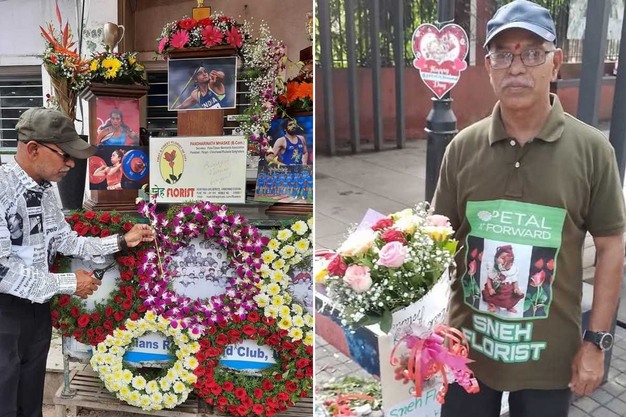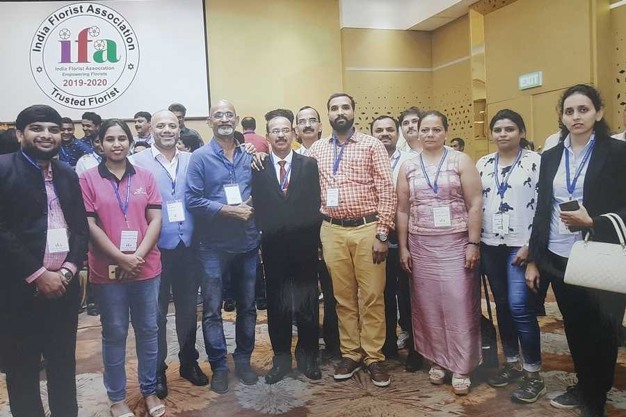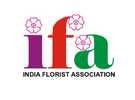"There is a bright future for Indian floriculture," states Pandharinath Mhaske a retail florist from Pune (India) and a coordinator of the India Florist Association (IFA). He started his career in the hotel industry and eventually found out that his true passion lays in floristry, leading to the establishment of his own flower shop 'Sneh' in Chinchwad at Raka Chambers on 5 August 1993. Over the years, he saw the Indian floriculture industry develop. In this article he discusses this development and what he expects for the years to come.

Pandharinath Mhaske and his wife surrounded by flowers
Flower production in India
According to Mhaske, in India, commercial floriculture started two-three decades ago as the domestic consumption of flowers has increased due to urbanization, migration, and growing economic welfare. Nevertheless, he stresses that flowers have been part of India's culture and traditions for much longer. "Flowers play an important role in the country's various festivals, as well as during the celebration of special occasions such as Valentine's Day, Teacher's Day (5 September), and Mother's Day."
Besides importing flowers such as orchids, tulips, hydrangeas, peonies and king protea, India also exports cut-flowers, dry flowers and houseplants. He elaborates on the country's regional differences: "India is a land of diversity and it applies to this industry as well. There are many geographical diversities which lead to differences in production and flower use in the different areas. For example, in south Indian states such as Tamil Nadu, Andhra Pradesh and Karnataka, jasmine, marigold and roses are produced at a large scale. And West Bengal and Assam farmers often grow orchids and anthuriums."

Flowers in daily life: 'Floral wishes' in honor of Indian Olympic medal winners (left) and flowers for the 'Petal it Forward' event (right).
Development and change
Mhaske emphasizes that one of the main recent developments in the Indian floriculture sector is the shift towards polyhouse and greenhouse cultivation. "Since the Indian government and many state governments support flower growers and farmers by offering technical and financial aid, the industry is moving from traditional farming to polyhouse and greenhouse cultivation. Thanks to government policies and subsidies, more export-oriented units are established." He gives the example of a government-established floriculture Park in Pune that according to Mhaske attracts many floriculture start-ups that collaborate with foreign experts.
Additionally, he finds that Indian consumer preferences changed over time, saying: "Initially, Indian people preferred flowers cultivated on the open-field such as garlands of tuberose and marigold. Now, they are more interested in exotic and premium flowers like hydrangeas, sunflowers, and orchids. Callas, lilies, phalaenopsis, and amaryllis are also high in demand. It has also become trendy to give potted plants as a present." When it comes to color trends in bouquets and decoration, Mhaske also sees a shift from bold and bright colors towards pastel colors and more natural hues.
Further, he points out that younger generations are more interested in fresh flowers. Thanks to their purchasing power, e-commerce and the impact of social media, youngsters spend more money on flowers. They buy flowers not only for specific occasions but also to feel good, he explains. By different packaging, innovative design, value creation and social media, Mhaska and other florists try to catch their attention.
A 'bright future'
As stated earlier, Mhaske believes that there lies a bright future ahead for Indian Floriculture. He explains why: "The demand for new and innovative design and a growing awareness for fresh flowers' impact on well-being all help to increase flower consumption, generating business for (female) farmers, trader, and florists in both urban and rural areas." He adds that people increasingly appreciate fresh flowers and real plants as opposed to plastic ones, noting that the Indian floriculture industry actively promotes them and their benefits. He also has high expectations of the concept of destination weddings, which according to him are expected to increase by 20-25% in 2025.

Pandharinath Mhaske (at center) with IFA members
At the Indian Florist Association (IFA), which represents florists and floral accessories suppliers across the country, they try to keep up with all these trends and developments to promote and support the Indian floriculture industry. "We have to keep going with the pace and dynamics of a changing world with ever-evolving trends and technology. We try to develop innovative ideas and enhance the quality of members' products and services against competitive prices," Mhaske shares. To this end, the IFA provides training programs and network opportunities, and organizes competitions, annual conferences and trade shows. "The exchange of ideas and best practices, as well as connecting with all segments of the floriculture industry contributes to a colorful future for everyone involved," he concludes.
For more information:
Pandharinath Mhaske
India Florist Association
www.ifaflorist.com
